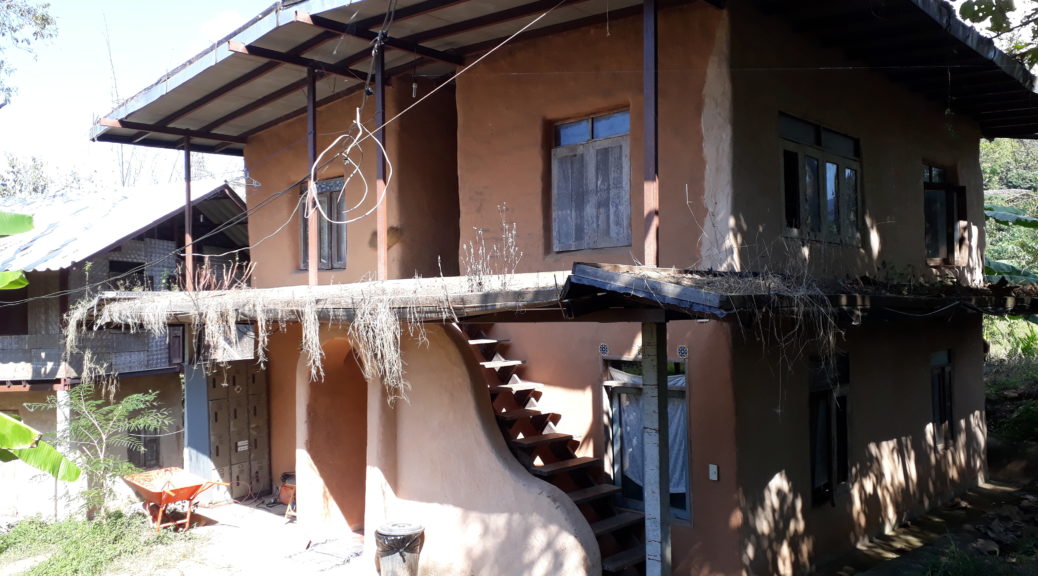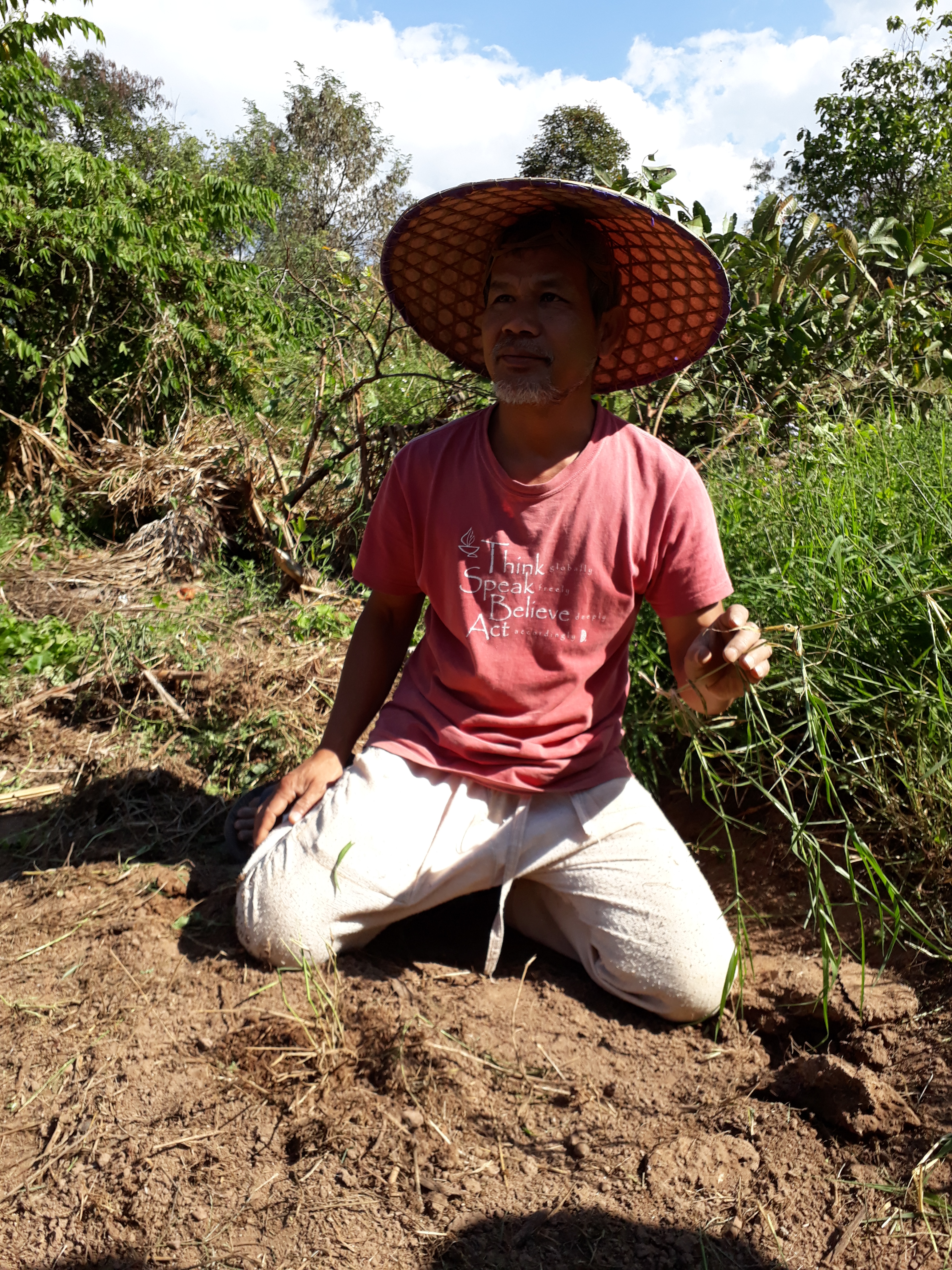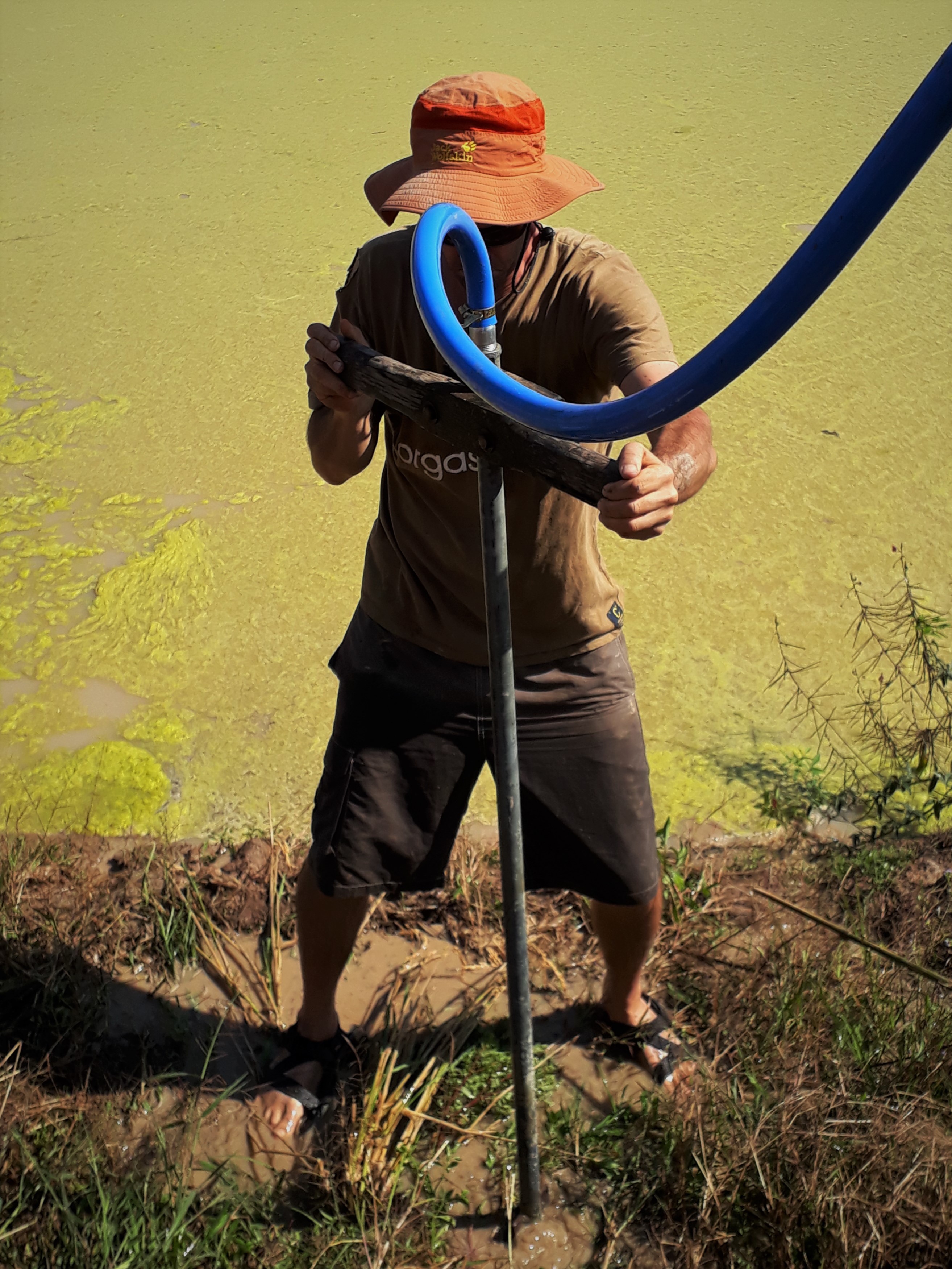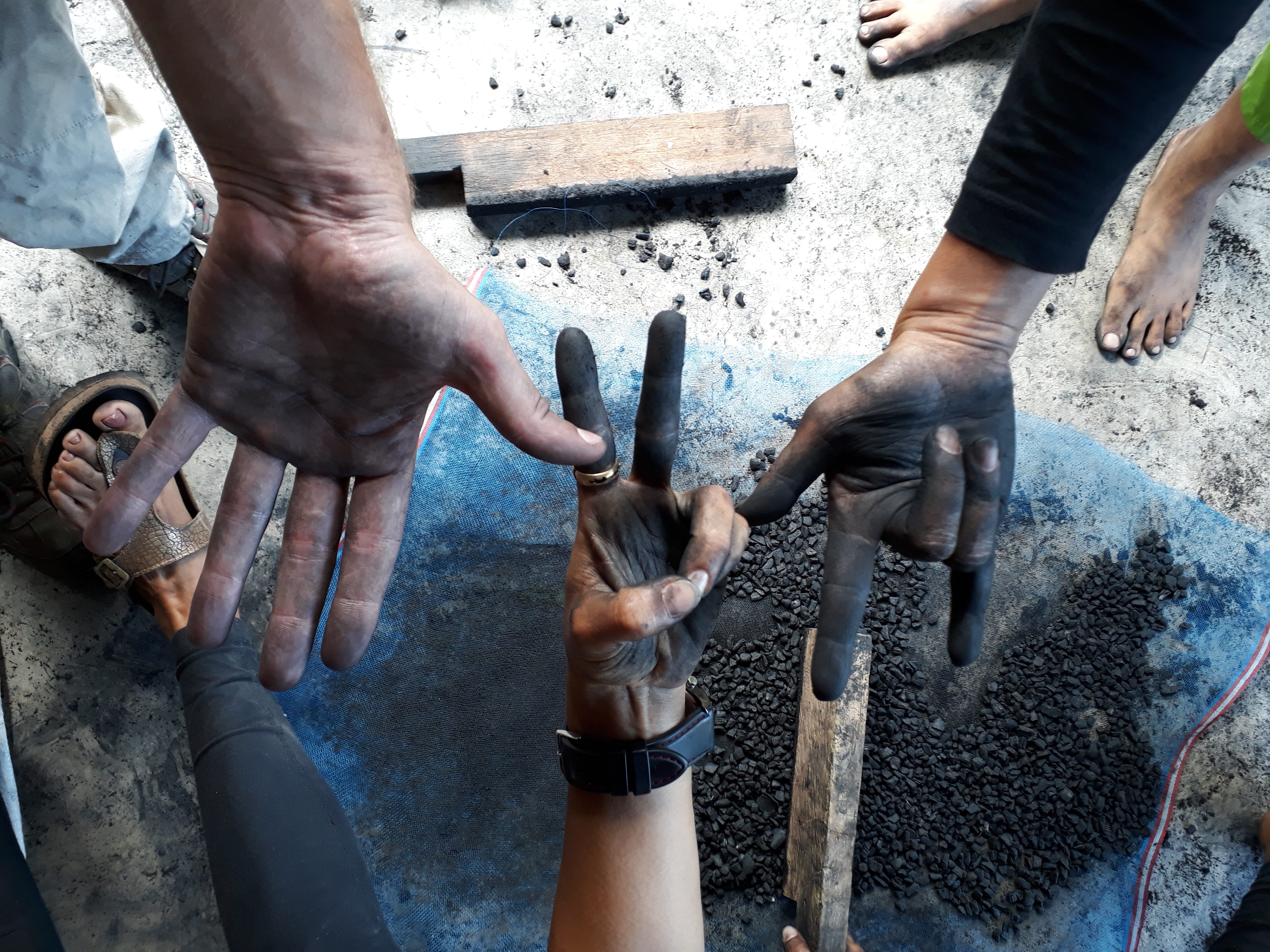Coming from the southern part of Germany we were taught one thing: “Work hard, work hard, build your own little house.” However, this wisdom seems to be twisted in northern Thailand – or have we misunderstood something? The wisdom in Germany should be terminologically correct: Work hard, work very hard and maybe work even a little bit harder to have enough money to be creditworthy to pay off the loan for the next 30 years that you need for the construction company that will build your dream of your home.
What is lost in the process? Time, you – and of course the fun.
We were looking for a more pragmatic approach and found what we were looking for. Our trip takes us to Mae Tang near the Mae Ngat Dam, about 2 hours north of Chiang Mai, Thailand. Jon Jandai (Phi Joe) founded the Eco Community Pun Pun about 20 years ago and is the pioneer in clay house construction in Thailand.
According to Phi (the Thai name for big brother) Joe, building a mud house is the easiest way to build a house, anyone can do it. Adults can do it, children can do it – you can do it! All you need is your body…and if we build a house in less than a year and for less than 10,000 USD, we have saved almost 29 years. How one wants to offset 29 years of life in Dollars is quite a difficult and philosophical question.

So let´s get started before we lose more time and build a new clay house for Nate and Phi Yao.
The place Nate and Phi Yao have chosen for their mud house is picturesque. Surrounded by rice fields and the southernmost foothills of the Himalayas, every sunrise and sunset are an experience. The natural swimming lake/water reservoir, which was built last year, create an indescribable ambience. Young and inquisitive people from over 20 countries have come to learn and help them build their new home.
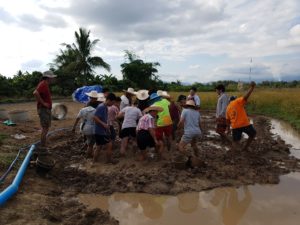
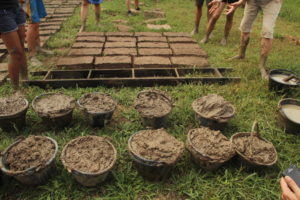
At the beginning we stand in a huge mud hole (former rice field), whose contents are to be transformed into a single-family house. How can you do that? Very simple: mix clay, dried rice husks, sand and water and tread until it becomes soft. The creamy earth mass is then poured into moulds, set up for drying and needs to be observed. If there are large cracks when the bricks are sun-drying, there is too much clay in the material. If they burst into thousands of individual parts during the crushing test on the ground, the proportion of sand must be worked on. Local soil conditions are different all over the world and trial and error is the only way to success. That being said, at the end of our time we made more than 6,000 clay bricks and quickly got a good feeling for the perfect mixture.

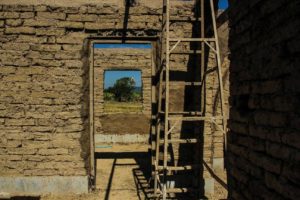
Then, brick by brick, the walls are gradually build. A mortar made of clay, sand and a rice husk mix is used as a binding agent. The 5-meter-wide and 3-meter-high arches were also very interesting to build. First a wooden construction was made, which holds the clay bricks until they support and strengthen themselves by their own weight. A string and a nail for centering the arc and a few stones for adjusting the angle of the clay bricks are enough to build such a masterpiece. Of course, we are particularly proud of the last stone.
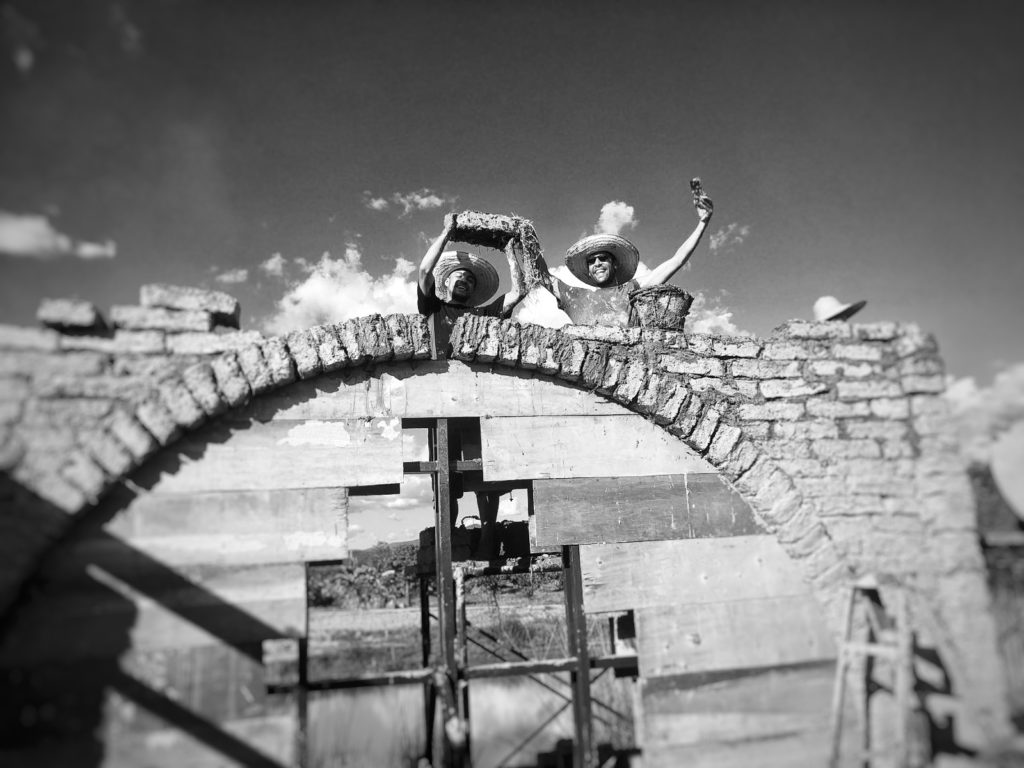
After almost two weeks, we managed to finish half of the house and learned how to mix plaster and clay paint from the above components. For practical reasons, not all elements of the house were built from natural and local materials. Experience has shown that termites in Thailand make it impossible to lay a loamy soil and foundation, or a durable roof construction made of wood. That is why we have used concrete for the foundation and metal for the roof construction. We at virblatt are thrilled to have learned this old way of building houses. It was an indescribable event to stand in our self-built natural walls, which continuously absorb and release water (humidity) and heat to have a pleasant room climate all year round. We are impressed by the possibility that everyone can build their own four walls from natural resources. And we are grateful to have met all the loving and interesting people during this workshop. It is indescribable what a close relationship you build with people and materials in a short time when you work together on such a valuable project: We built a house!
Life is easy!
think about it.
virblatt


